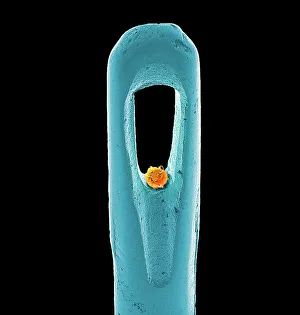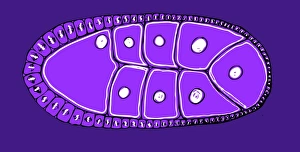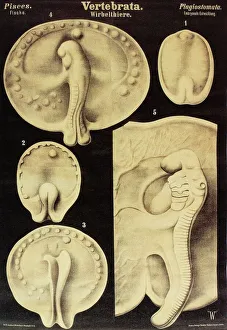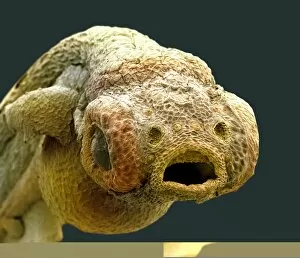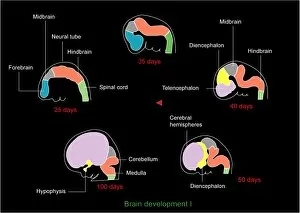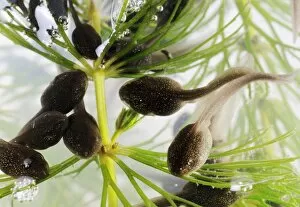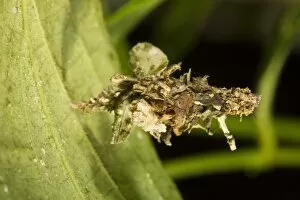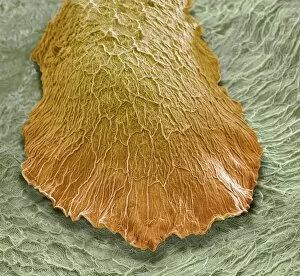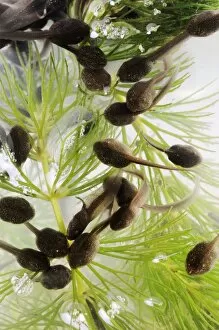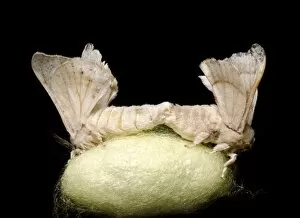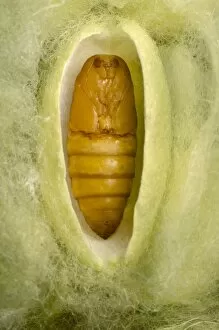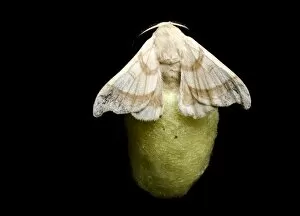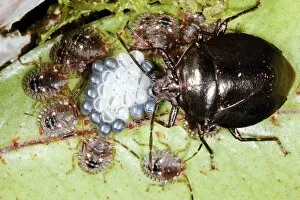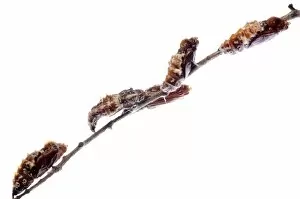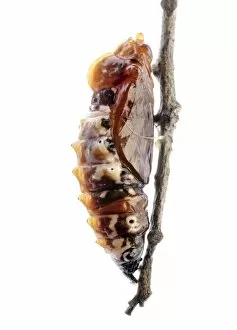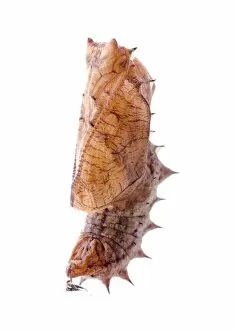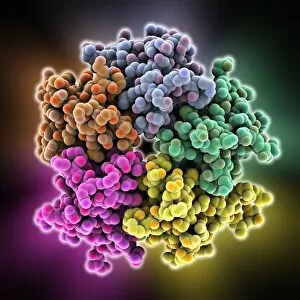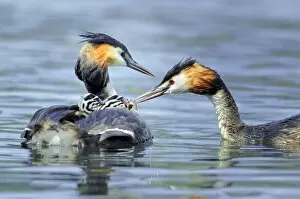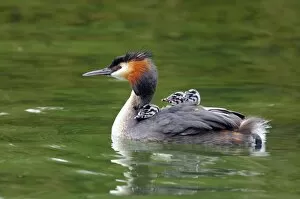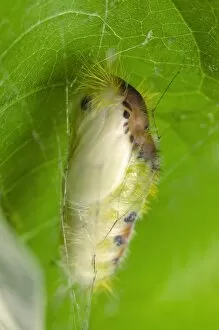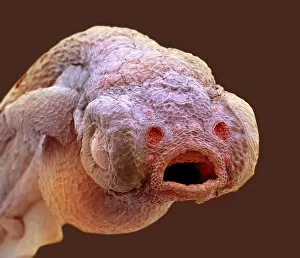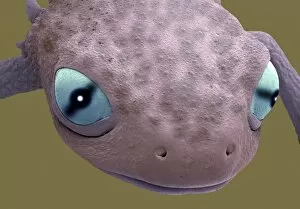Developmental Biology Collection
"Unveiling the Wonders of Developmental Biology
All Professionally Made to Order for Quick Shipping
"Unveiling the Wonders of Developmental Biology: From Embryonic Stem Cells to Fetal Brain Development" Embark on a fascinating journey into the realm of developmental biology, where intricate processes shape life itself. In this captivating world, we explore the remarkable transformations that occur from conception to birth and beyond. Delicate as an embryonic stem cell being manipulated by a needle under the watchful eye of scientists, these tiny building blocks hold immense potential for regenerative medicine and understanding human development. Peering through a scanning electron microscope (SEM), we are mesmerized by the intricate head structure of a young newt. Its features reveal nature's precision in crafting complex organisms from simple beginnings. An artwork depicting fish embryo showcases nature's artistic flair in shaping life forms. Each stroke represents the delicate balance between genetic instructions and environmental cues that guide growth and differentiation. In another masterpiece, fetal brain development unfolds before our eyes. Brushstrokes capture the intricacies of neural connections forming within this vital organ, laying down foundations for cognition and consciousness. Observing tadpoles feeding on pond weed reminds us how sustenance fuels growth during early stages of life. These voracious eaters exemplify nature's ingenious mechanisms for ensuring survival through nutrient acquisition. A light micrograph reveals stunning details of a mouse embryo, highlighting its astonishing resemblance to humans at such an early stage. This shared blueprint underscores our evolutionary heritage and offers insights into human development. Witnessing a human fetus nestled comfortably in its mother's womb evokes awe-inspiring wonder at life's miraculous creation. Here lies one of humanity's most profound mysteries - how each individual is shaped with unique traits yet connected by common threads. The bagworm larva captivates with its ability to construct elaborate protective cases around itself using silk and natural materials—an embodiment of adaptation strategies employed throughout evolution to ensure survival amidst changing environments. Traveling back centuries through time, an 1825 artwork showcases the beauty of fetal brain development.

